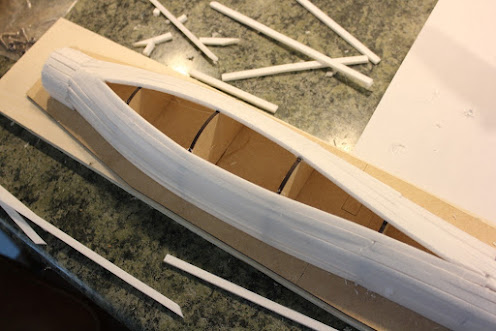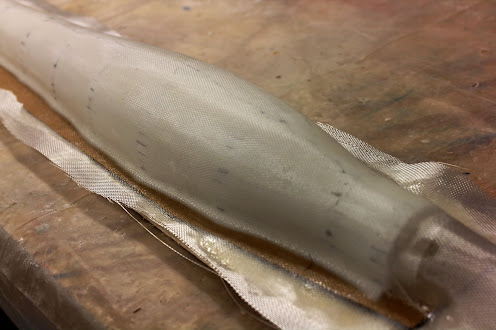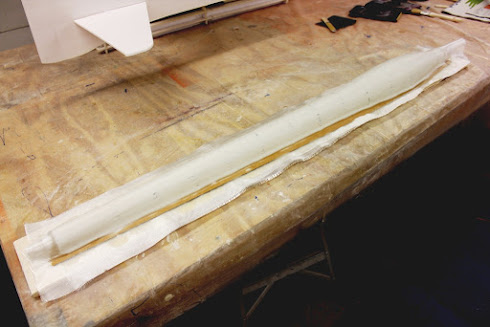With the snow cleared from my driveway this morning and another project sitting on my work table in my shop I thought it best that I get this last posting out to show you how my new motor glider project turned out. So here you go.
Sunday, January 24, 2021
The New Motor Glider Winter Project Part 3
Wednesday, January 20, 2021
The New Motor Glider Winter Project Part 2
With the plug completed for the motor glider fuselage that I wrote about in the first installment of this project now my attention turned to actually making the fiber glass molds to make the fuselage. With the fuselage being the same shape both on the top and bottom I had to figure out how to make the canopy and the openings where the wing would be attached to the fuselage. So here is how it all went.
Tuesday, January 19, 2021
A New Motor Glider Design Winter Project
Hello! Dave here once again. With winter in full force now here in the Midwest it is always good to have a new airplane project to work on to pass the time. Plus with everything else that is happening in the world this is even more so a necessity to keep ones sanity as well. So I thought it best to get this post out about the new motor glider that I have been working on to show everyone what I have been up to.
So with this being accomplished I decided to work on a new motor glider that would have a more aerodynamic wing, a fiberglass fuselage, a larger motor and battery along with a folding prop to improve it's glide performance.
Here are a few images of the design that I put together to work out how it would possibly look once completed.
Here you can see the difference in the smoothness of the new wing compared with the wing on the motor glider I flew last year. Should be a better performer I suspect.
Here the wing sections have been put together and are ready for final assembly. The wing tips were built the same way but are shaped a bit differently than the mid-sections of the wing you see here.
The new motor glider wing pictured above was hot glued and taped together to form the entire wing. The assembly went together very well and I am happy how straight the wing turned out along with how light it is. The wing tips shown here are tapered down to a smaller chord length and tipped at a proper angle for stability. The only thing missing in this photo is the 3D printed wing tips that will be added later on in the construction.
Next step in the project was to build the mold for the fiber glass fuselage. Here's how this all turned out.
Here the fuselage plug has had several sessions of sanding and primer laid down. Other than the glazing (red colored) putty on the part it is starting to smooth out very nicely.
After many sessions of sanding, priming, sanding, priming over and over again the fuselage plug as you see it above was now ready to start making the molds for the fuselage.
That's about it for today. I will post the next installment of this project in a few more days once I get all the photos organized to get them ready for the next post. There I will cover the completion of the fuselage and hopefully the final assembly. I will just have to see how long the next post will be once I get that far. Check back soon to see the next installment.
The New Motor Glider Winter Project Part 3
With the snow cleared from my driveway this morning and another project sitting on my work table in my shop I thought it best that I get th...









































































